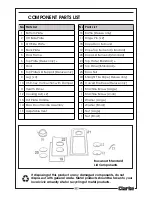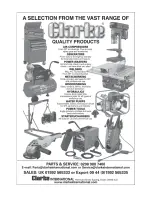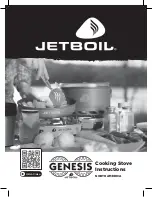
16
This stove will function with wood or coal, but in general all fuel should be dry
and timber should be well seasoned so as to have a moisture content below
20%. The use of damp wood will result in more soot and tar deposits being left
in the chimney, flu and stove, and will not release heat if thermal energy is
being used to drive out moisture from the fuel.
Other fuels can be used in conjunction with wood, provided the base of the
fire remains as wood or compressed block fuels. Coal products can be
added to this provided the volume of coal products is less than that of other
fuels.
With solid fuels, there is less need to burn the stove hard after refuelling. The
rate of refuelling will also be less often than with wood.
Avoid using the stove to incinerate other materials including household
waste.
Avoid using ‘green’ unseasoned wood, treated wood such as telegraph
poles, or plywood / chipboard containing glues and resins which pollute the
environment and cause the fire to burn too quickly. Such materials can
produce excessive tar or creosote which can be damaging and in extreme
cases cause a fire inside the chimney.
The dryness of wood can be assessed by looking at the end of the log. Radial
cracks, deep enough to be considered as splits should be present in dry,
seasoned logs. This level of dryness may take up to two years to achieve.
The maximum length of fuel suitable for this stove is approx 50 cm so as to lay
flat over the embers, and logs of greater than 10 cm diameter should be split.
Confirm with your fuel provider as to which type will suit best. Larger fuels will
allow a greater draught in the firebox which will speed up combustion.
Household coal produces more ash & chimney deposits than smokeless fuels.
For further information on type and availability of fuel, the Solid Fuel Associa-
tion (http:/www.solidfuel.co.uk) serves as an advice centre to domestic
consumers including all aspects of fuel types.
The UK Smoke Control Areas website (http:/www.uksmokecontrolareas.co.uk)
defines the location of smoke controlled areas throughout England, Scotland,
Wales and Northern Ireland and lists all fuels which are authorised for use in
Smoke Control Areas.
INITIAL SEASONING
Following installation, and before regular use, the stove must be seasoned to
prevent cracking of the metal casting. This procedure should also be
followed if the stove has not been used for prolonged periods (during the
summer months for example), and is carried out as follows:
1. Light a small fire in the middle of the stove, well away from the sides.
2. Allow the stove to warm up slowly and evenly with the air controls almost
closed, avoiding intense flames.
Содержание BOXWOOD
Страница 1: ...USER GUIDE GC0710 Classic Cast Iron Stove BOXWOOD BOXWOOD DELUXE PART NOS 6910065 6910070 ...
Страница 24: ...24 DECLARATION OF CONFORMITY ...
Страница 25: ...25 DECLARATION OF CONFORMITY ...
Страница 28: ......













































